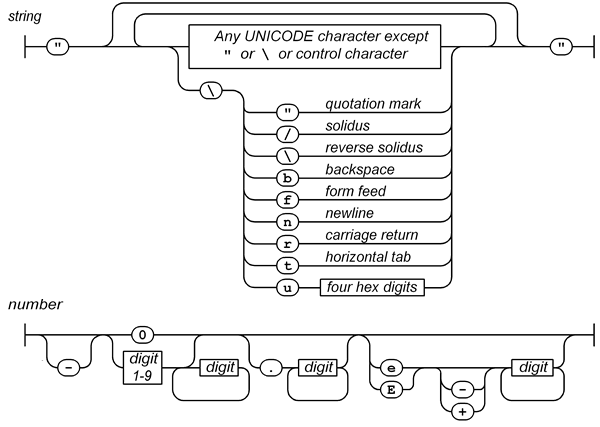'JavaScript'에 해당되는 글 4건
- 2008.01.15 How to Drag & Drop in Javascript
- 2007.02.14 Quick guide to somewhat advanced JavaScript + prototype.js
- 2006.12.21 [스크랩] Ajax 마스터하기
- 2006.12.13 JSON(JavaScript Object Notation)
Quick guide to somewhat advanced JavaScript
tour of some OO features
http://www.sergiopereira.com/articles/advjs.html
- 비교적 기초적인 내용이지만 가르쳐주는 사람도 없고, 의외로 한글로 된 문서를 찾다 없어 궁금해만 하던 차에 찾은 쉬운 영문 문서.
[prototype.js]
http://openframework.or.kr/framework_reference/prototype_js/1.4.0/prototype.js.html
http://www-128.ibm.com/developerworks/kr/library/wa-ajaxintro1.html
Ajax 마스터하기, Part 1: Ajax 소개 (한글)
Ajax 마스터하기, Part 2: JavaScript와 Ajax를 이용한 비동기식 요청 (한글)
Ajax 마스터하기, Part 3: Ajax의 고급 요청 및 응답 (한글)
Ajax 마스터하기, Part 4: 웹 응답에 DOM 활용하기 (한글)
Ajax 마스터하기, Part 5 : DOM 다루기 (한글)
Ajax 마스터하기, Part 6: DOM 기반 웹 애플리케이션 구현 (한글)
Ajax 마스터하기, Part 7: 요청과 응답에 XML 사용하기 (한글)
Ajax 마스터하기, Part 8: 요청과 응답에 XML 사용하기
출처 : http://www.json.org/
각 lauguage별 사용법은 위 페이지 참조.
JSON (JavaScript Object Notation) is a lightweight data-interchange format.
It is easy for humans to read and write. It is easy for machines to parse and generate. It is based on a subset of the JavaScript Programming Language, Standard ECMA-262 3rd Edition - December 1999. JSON is a text format that is completely language independent but uses conventions that are familiar to programmers of the C-family of languages, including C, C++, C#, Java, JavaScript, Perl, Python, and many others. These properties make JSON an ideal data-interchange language.
JSON is built on two structures:
In JSON, they take on these forms:
object
- An object is an unordered set of name/value pairs.
- An object begins with { (left brace) and ends with } (right brace).
- Each name is followed by : (colon) and the name/value pairs are separated by , (comma).
array
- An array is an ordered collection of values.
- An array begins with [ (left bracket) and ends with ] (right bracket). Values are separated by , (comma).
value
- A value can be a string in double quotes, or a number, or true or false or null, or an object or an array. These structures can be nested.
string
- A string is a collection of zero or more Unicode characters, wrapped in double quotes, using backslash escapes. A character is represented as a single character string.
FORMAT:

string and number format:

각 lauguage별 사용법은 위 페이지 참조.
JSON (JavaScript Object Notation) is a lightweight data-interchange format.
It is easy for humans to read and write. It is easy for machines to parse and generate. It is based on a subset of the JavaScript Programming Language, Standard ECMA-262 3rd Edition - December 1999. JSON is a text format that is completely language independent but uses conventions that are familiar to programmers of the C-family of languages, including C, C++, C#, Java, JavaScript, Perl, Python, and many others. These properties make JSON an ideal data-interchange language.
JSON is built on two structures:
- A collection of name/value pairs. In various languages, this is realized as an object, record, struct, dictionary, hash table, keyed list, or associative array.
- An ordered list of values. In most languages, this is realized as an array, vector, list, or sequence.
These are universal data structures. Virtually all modern programming languages support them in one form or another. It makes sense that a data format that is interchangable with programming languages also be based on these structures.
These are universal data structures. Virtually all modern programming languages support them in one form or another. It makes sense that a data format that is interchangable with programming languages also be based on these structures.
In JSON, they take on these forms:
object
- An object is an unordered set of name/value pairs.
- An object begins with { (left brace) and ends with } (right brace).
- Each name is followed by : (colon) and the name/value pairs are separated by , (comma).
array
- An array is an ordered collection of values.
- An array begins with [ (left bracket) and ends with ] (right bracket). Values are separated by , (comma).
value
- A value can be a string in double quotes, or a number, or true or false or null, or an object or an array. These structures can be nested.
string
- A string is a collection of zero or more Unicode characters, wrapped in double quotes, using backslash escapes. A character is represented as a single character string.
FORMAT:

string and number format:





